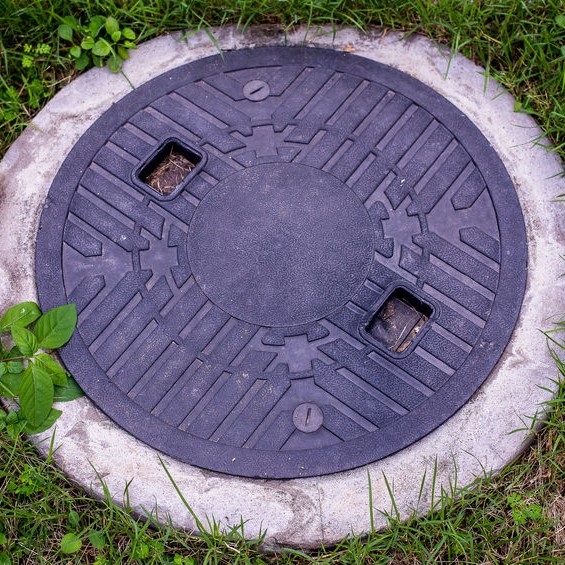
Can septic tanks be repaired?
If you live in a rural area, or sometimes in a small town, your home may be on a septic tank system instead of city sewage system. A septic tank is a large cylindrical or rectangular concrete container that is buried underground, usually behind a house. Some septic tanks are made of fiberglass, or polyethylene. If the septic system isn’t working properly, septic tank repair must be done promptly to avoid major trouble.
The purpose of a septic tank is to separate solids, like human waste and toilet paper, from the wastewater that comes from the bath, laundry, kitchen, toilet, etc. The tank stores the waste, decomposes the solid waste and the liquid flows on to a drain field. This replaces the human waste and wastewater flowing into a sewage system.
What happens if septic tank gets too full?
One of the most common calls that Septic Tank Specialist get is needing somebody for fixing septic system because it is too full. What is too full and when is professional septic tank repair needed?
Experts on septic tank repair say that your septic tank should “filled” to the regular liquid level. This is at the bottom of the outlet pipe that carries the liquid waste to the drain field where it is absorbed. This is usually from eight inches to twelve inches from the tank top on average. As long as the liquid is below the outlet pipe, the household and human wastewater is usually flowing to the drain field and being absorbed and there isn’t any need for septic tank repair service.
If the household and human liquid wastewater level is above that outlet pipe, or at the tank’s top, that is considered “overfull. That is an indication that the septic tank is too full and above the normal operating level. At this point, professional septic tank repair is needed, however, it may not be an issue with the tank itself. It could be a number of other issues, starting with the absorption area or drain field.
What breaks down sewage in a septic tank?
There is a complete ecosystem in a septic tank, living organisms that assist the septic tank in functioning as designed. For anyone that has a septic tank, it can be helpful to have some understanding how a septic tank works and the importance of septic tank maintenance and care. With that understanding, you’ll know that your septic system is functioning correctly or if you need professional septic tank repair, like if the bacteria isn’t doing what it needs to do inside the tank.
Yes, in the case of septic tanks, bacteria is a good thing and with enzymes, it all helps a septic tank function. The bacteria and enzymes naturally form colonies inside the septic tank which keep the tank from getting backed up or overfull. If the bacteria and enzymes are working as they should, you’ll never need any septic tank repair services.
The ideal working situation is the bacteria removes the sludge and enzymes eats away at the scum, while the microbes eat away the waste, transforming large amounts of sludge into gases and liquids. When this process is working properly, the septic tank is able to push that “treated” wastewater to the drain field.
The ideal perfect scenario, the bacteria and enzymes never need any assistance in completing their jobs. However, there are times that a septic tank needs help, and this is an important part of the maintenance and care by the homeowner. A septic tank needs to be pumped by a professional every few years to help the bacteria get caught up on its workload.
There are additives that can be added to the septic system via the sinks and toilets, to strengthen the microbes and assist them in getting rid of the stubborn solids. There are times when those additives aren’t enough, causing issues with the bacterial in the septic tank. At this point, professional septic tank repair is required.
How do you stop a septic tank from leaking?
A septic system provide a valuable service, and like the sewage system in the city, it isn’t something that is thought about very often. We need it, it’s there, done and done. However, when a septic tanks is leaking, it is the focus of the day! So, what do you need to do? Here are some recommendations:
- Don’t Pump Water Out – this can create a health hazard.
- Determine the Leak Location – if you’re not able to locate it, call the county health office in your area for a septic system layout of your septic system. (This is supposed to be filed with them after the system is installed).
- Inspect for Damage – inspect around the septic tank and drain field, looking for holes in the ground, soil settling. If you aren’t finding anything, call a professional septic tank repair service.
- Measure the Groundwater Depth – This is done with a soil prob or an auger, within 10 feet of the septic tank and 20 feet from the drain field.
- If Your Septic System is a Mound System, Turn the Power off – if the electrical power gets under water, you’re going to need septic tank electrical repair in addition to leak repair.
- Minimize Your Water Use – until the leak is found and repaired, minimize your water and waste that flow into the septic tank and drain field.
- If a Problem is Still Present – once you locate and repair the leak or the issue causing the leak and there is still a problem, all for professional septic tank repair.

How many years does a septic tank last?
With proper maintenance and upkeep by the homeowner, including professional pumping service every few years, a septic system lifespan can reach up to 40 years. There are other factors that can affect the lifespan expectancy of a septic tank, that can shorten that lifespan. Those factors include the materials the septic system was made from, the ground, tree roots, and vehicle traffic.
So, when you are faced with septic system repair or replacement, it is a big financial investment. You want to make sure you’re working with a qualified septic system professional and have a written guarantee on the workmanship and the septic system itself. How long does it take to replace septic system?
Installing a new septic system can take up to five days. Installing a replacement can take between 2 to 5 days, depending on how much trouble the crew has disconnecting and remove the existing tank. It can take longer when new lateral lines are laid that lead to the drain field and then the connection to the house. Again, it is important to use only a certified, insured, and license sept tank professional. This should be the same person you can call for septic tank repair service as well. Call 314-348-7503 today for your septic system service in St Louis, MO.
